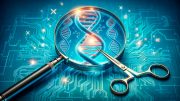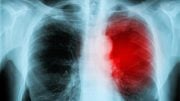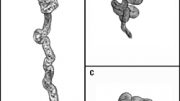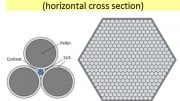
Researchers have identified a genetic cause of severe obesity.
Researchers have identified a genetic cause of severe obesity, finding that mice with the genetic mutation gained weight even while eating the same amount of food as their normal counterparts.
Harvard Medical School researchers at Boston Children’s Hospital have identified a genetic cause of severe obesity that, though rare, raises new questions about weight gain and energy use in the general obese population. The research, published in the journal Science on July 19, involved genetic surveys of several groups of obese humans and experiments in mice.
Mice with the genetic mutation gained weight even while eating the same amount of food as their normal counterparts; the affected gene, Mrap2, has a human counterpart (MRAP2) and appears to be involved in regulating metabolism and food consumption.
“These mice aren’t burning the fat, they’re somehow holding onto it,” says the study’s lead investigator Joseph Majzoub, HMS professor of pediatrics and chief of endocrinology at Boston Children’s Hospital. “Mice with the genetic mutation gained more weight, and we found similar mutations in a cohort of obese humans.”
The protein created by the Mrap2 gene appears to facilitate signaling to a receptor in the brain called Mc4r, which helps increase metabolism and decrease appetite as part of a larger signaling chain involved in energy regulation. Fat cells produce the hormone leptin, prompting receptors in the brain to instigate the production of a second hormone, αMSH. Mc4r detects this hormone with the aid of Mrap2, leading to a decrease in appetite and weight. Mutations in this signaling chain, including mutations in Mc4r, are known to increase the likelihood of obesity.
Majzoub, first author Masato Asai, now at Nagoya University in Japan, and colleagues studied mice with the Mrap2 gene knocked out both overall and just in the brain. In both cases, the mice grew to about twice their normal size. Weight gain was greatest when both copies of Mrap2 were knocked out, but the mice still showed weight gain and appetite increase with one working copy of the gene. The weight gain was more pronounced in males than females. In addition, the mice without Mrap2 had more exaggerated weight gain when fed a high-fat diet than normal mice.
Surprisingly, while the mice without Mrap2 didn’t eat more at first, they still gained weight faster than the controls. Later, their appetites increased and they continued to gain more weight than the controls, even when held to the same diet and quantity of food. In the end, the mutant mice had to be underfed by 10 to 15 percent to show the same weight gain as their normal peers. As soon as they were let off the restricted diet, their weight gain increased.
To investigate the gene in humans, Majzoub collaborated with Sadaf Farooqi, of the University of Cambridge, and others to investigate groups of obese patients from around the world. The team found four mutations in the human equivalent of Mrap2 among the 500 people, all in patients with severe, early-onset obesity; each of the four affected patients had only one copy of the mutation.
While the finding suggests that these rare mutations directly cause obesity in less than 1 percent of the obese population, the researchers suspect that other mutations in the gene might occur more commonly and might interact with other mutations and environmental factors to cause more common forms of obesity. “We found other mutations that weren’t as clearly damaging to the gene,” notes Majzoub. “It’s possible that some of these more common mutations actually are pathogenic, especially in combination with other genes in the same pathway.”
One intriguing theory, called the thrifty-gene hypothesis, holds that rare mutations in genes like Mrap2 exist because they gave humans an evolutionary advantage in times of severe famine. Further investigation into how these mutations work may lend insight into the body’s mechanisms for energy storage and use. In the present study, the lab did not observe anything to explain why the mutant mice were storing more food energy, such as a difference in activity level or heat output.
Majzoub and his colleagues look forward to expanding the scope of the research, studying additional populations of obese people, including measures of their activity and diet, as well as further exploring how the gene alters energy balance.
This work was supported by grants from the National Institutes of Health, including NIHP30-HD18655, the Timothy Murphy Fund, the National Alliance for Research on Schizophrenia and Depression, the Wellcome Trust, the Medical Research Council (grant number G0802796), the NIHR Cambridge Biomedical Research Center, and R01DK075787.
Reference: “Loss of Function of the Melanocortin 2 Receptor Accessory Protein 2 Is Associated with Mammalian Obesity” by Masato Asai, Shwetha Ramachandrappa, Maria Joachim, Yuan Shen, Rong Zhang, Nikhil Nuthalapati, Visali Ramanathan, David E. Strochlic, Peter Ferket, Kirsten Linhart, Caroline Ho, Tatiana V. Novoselova, Sumedha Garg, Martin Ridderstråle, Claude Marcus, Joel N. Hirschhorn, Julia M. Keogh, Stephen O’Rahilly, Li F. Chan, Adrian J. Clark, I. Sadaf Farooqi and Joseph A. Majzoub, 19 July 2013, Science.
DOI: 10.1126/science.1233000









Be the first to comment on "Researchers Link Genetic Mutation to Severe Obesity"